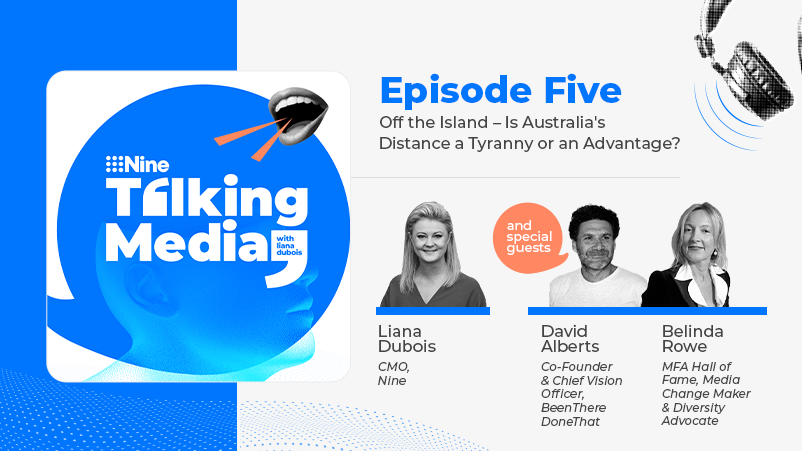Rip and replace: All the winners and losers from Lendlease's massive martech consolidation; total cost of ownership slashed 78 per cent; few functional sacrifices in Salesforce-Hubspot swap

Everybody hurts: "It actually was really painful in the end for everybody," says Marc van den Berg, Global Head of IT Development & Innovation at Lendlease. So it went full stackageddon with a major martech consolidation – in seven months.
Massive martech licensing cost reductions have seen Lendlease slash total cost of ownership of its stack by almost 80 percent within months. As Mi3 reported earlier this year, the multinational developer abandoned Salesforce after a decade's worth of collaboration, replacing it with Hubspot. New details have come to light after a presentation in the US by a key executive. Overall, it cut the number of providers from 20 to just five, and only two incumbents, DocuSign and Stripe survived 'stackageddon'. The timeframe was equally impressive – the project was delivered in seven months, a schedule the implementation partner described as 'insane'. But Lendlease's Marc van den Berg, Global Head of IT Development & Innovation, attributed success to that truncated timetable and a brutally honest acceptance of the state of play. Per van den Berg, it was better to just rip the band aid off technology debt that had become "really painful" for the business.
What you need to know:
- Lendlease is saving million of dollars a year as a result of its martech consolidation which has reduced total cost of ownership by 78 percent, driven largely by a 79 per cent decrease in licencing costs. All without any material impact on marketing capabilities, according to insiders.
- As Mi3 reported earlier this year, the construction giant swapped out Salesforce as its CRM core, replacing it with Hubspot, a tier two martech vendor that typically works with companies with up to 2,000 staff. Lendlease has 10,000 employees.
- The project scope was huge, involving north of 800 workflows, and 600 staff directly across 11 business units in eight regions. Circa 100 stakeholders worked together to deliver the project in just seven months, a timeline the implementer admitted was "insane".
- Key priorities were reducing technical complexity, improving experience, harmonising how work is done across the company and as ever, reducing costs, per Marc van den Berg, Global Head of IT Development & Innovation at Lendlease.
- Given the scope, schedule and complexity, governance was critical.
CRM had unfortunately become just very disjointed. It was a very poor experience for internal business units.
Property giant Lendlease is banking massive savings from its martech consolidation including a stunning 78 per cent reduction in total cost of ownership, Mi3 has learned. We first reported on the martech rationalisation program earlier this year. The scope of the overhaul, given Lendlease's size and the constituent parts of its stack, would likely translate to savings running to multiple million of dollars, according to industry analysts.
The implementation was completed in only seven months, a timeline described as "insane" by the implementation partners Hype and Dexter – and a remarkable achievement given the project spanned 11 business units across eight regions with north of 100 stakeholders. More than 800 workflows came under the microscope – and out the other side.
Under pressure from the board to cut costs, tech was firmly in the crosshairs. The decision to rebuild its martech stack saw Lendlease jettison a decade-long commitment to Salesforce, as well as culling more than a dozen applications. It replaced them with just five.
Plus, it made a big call in opting for Hubspot as the CRM core, which which Lendlease Global Head of IT Development & Innovation, Marc van den Berg, acknowledged is typically regarded as a tier two player.
The bulk of the TCO reductions came from reduced licence costs – now down 79 per cent. It was also able to achieve an 82 per cent operational cost reduction (i.e. support, maintenance, management).
By removing over 20 CRM platforms and integration points, the construction giant has ended up with a vastly less complex – and vastly less expensive – martech architecture based largely upon a single integrated code base in the CRM core.
Remarkably, it did this without sacrificing any material capability around its use cases, although this did require changes in how the work was done in some instances, acknowledged van den Berg.
Consolidation crunch
Lendlease is one of the more high profile martech consolidations underway in Australia, but its experience it typical, according to Forrester Researcher's Daryl Wright, principal analyst of Demand and ABN strategies. He said yearly cost savings could easily run into several million given both the size of Lendlease, and the scale of the stack cull.
"Typically marketing accounts for 20 per cent of technology spend, and if they are cutting from 20 to five apps they cut easily be cutting two thirds of that cost," he told Mi3.
Wright said firms such as Lendlease are experiencing two types of tech bloat. Firstly, Covid drove an upswing in the number of point solutions in play as companies raced to ensure they could trade in a locked-down world. Meanwhile, big brand SaaS outfits made hay while the sun was shining, adding a slew of additional functionality to their wares. But that inevitably created redundant capabilities across the stack – and the combination of the two creates fertile ground for cost savings.
Which is why consolidation is now a booming business.
Big call
With 600 users, the Lendlease implementation is Hubspot’s biggest deal in Australia, and one of its largest in the world, according to company insiders. Its scale far exceeds the vendor’s usual target cohort of companies with up to 2,000 employees – Lendlease has 10,000 staff.
Now that it has replaced Salesforce as Lendlease’s one-throat-to-choke it needs to support the business on an ongoing basis. Company executives Mi3 spoke with were vague on the detail of how that would happen, but clearly both client and provider are sufficiently confident of delivery given the scale of undertaking.
Killing fields
In addition to the Hubspot core, Lendlease settled on DocuSign, Stripe, Dialpad and Integration Glue as its core environment. Of those DocuSign and Stripe are the only surviving incumbents.
The list of jettisoned incumbents is extensive.
Salesforce is the highest profile provider ousted (Lendlease and its partners were careful not to mention them by name during a presentation to Hubspot INBOUND in Boston last week. Salesforce is a major Lendlease customer in addition to being a provider).
Others casualties – many in relation to the decision to drop Salesforce – included Blackthorn, Formyoula, Xappex, Gearset, Dashcord, Data Dwell, Odaseva, Humanify, Getfeedback, Conga, and Dwellant. Lendlease also ditched what is described as a “leading integration tool” although Mi3 has not been able to establish the name of that vendor.
Pain relief
According to Lendlease’s van den Berg: “We had a very complicated world, we had very many different instances of the CRM deployed for sales and marketing. We had many, many different technologies wrapped around that as well.”
That also fed an organisational problem of increasingly siloed information pipes.
“That’s the complexity point. It actually was really painful in the end for everybody."
While cost may have been the initial driver, taming an increasingly complex and hard to maintain environment was a key motivation, added van den Berg.
“Having unified goals, is fundamental to being able to succeed. In the context of our CRM transformation journey, we broadly had three key priorities," he said.
“The first one was very much the reduction of technical complexity. Over the period of 10 years we had built a lot of custom CRM capability. We also had many, many different technologies that made up our ecosystem. And key to our success was reducing complexity. Within that, [we were] also trying to get to a point where we were able to increase adoption in the future, because we had a challenge when it came to ongoing adoption and embedment.”
The second priority was to corral broader IT operations across Lendlease’s business units globally.
“We used the opportunity as part of our CRM transformation, to look at our processes across different business units … and really try and standardise and harmonise how we as a business operated.”
Improving customer experience was also an inherent part of this goal. “CRM had, unfortunately become just very disjointed. And so it was a very poor experience for internal business units.”
The third key area, per van den Berg, was total cost of ownership.
"When you look at the cost of licensing with our incumbents, the cost of periphery technology, then at the cost of maintaining that in terms of people, vendors, third parties – our total cost of ownership became unsustainable.
“We got to the point where we just really needed to find another way, and just get out of the complexity and the pain that we were experiencing as a business."
It had so many massive complexities, and a huge amount of stakeholders. We had to build custom integrations with legacy undocumented ERPs. We had to rebuild entire integrations with DocuSign, with Stripe and an entire document generation platform, customer portals, agent portals, full offline inspection. They basically replaced Eventbrite with a 100 per cent HubSpot solution.
And breathe...
Now safely out the other side, Romi Dexter, co-founder at implementation partner Hype and Dexter admitted a significant daunt factor from what was almost “an impossible project."
“It had so many massive complexities and a huge amount of stakeholders. We had to build custom integrations with legacy undocumented ERPs. We had to rebuild entire integrations with DocuSign with Stripe and an entire document generation platform, customer portals, agent portals, full offline inspection. They basically replaced Eventbrite with a 100 per cent, HubSpot solution," she said.
“There were huge complexities in every aspect", per Dexter, describing the seven-month timeline as "insane".
“Looking from the outside, if somebody had come along and said, 'hey we're going to deliver for you and seven months!' I would have laughed them out the room.”
Quick vs dead
But breakneck speed to value was key to the success, according to Lendlease's van den Berg.
“You really have two choices. You can blindly rip the band aid off, and do what you have to do quickly, get to the upside and realise the benefits as soon as possible. Or the other choices we had was to be slow and steady, and maybe take 18 months to do the strategy.”
Option two would have been a mistake, he said.
“In hindsight, if we had taken the slow and steady road, I don't think we'd be sitting here. I don't think we would have achieved what we're able to achieve on HubSpot. All businesses are going through transformation and change. If you were to do it over 18 months, no doubt, your business would change as well. We also got a couple of other things where we had to double up on costs. So the quicker that you can get to the other side there is a major benefit there in terms of cost.”
Boulder buster
Just as important was galvanising everybody around a common vision and goal, he said, with muscular governance the other fundamental success factor.
“We chose a number of senior stakeholders from an executive leadership point of view, along with the heads of a number of businesses to be part of a steering committee. That was quite critical, because they were the ones that ultimately also helped us to overcome the boulders and the barriers we had from an internal perspective," per van den Berg.
“When you have many different business units, you run into a lot of walls. So having very, very strong governance was critical to our success in terms of breaking down those boulders.”
Finally, flexibility and agility are paramount in any major project.
"There's a lot of things that you won't be able to foresee when you're going through something of this scale. Being able to be nimble and adaptive to that is fundamental to success," said van den Berg. "If you had to turn around and sign a document and [spend too much time to] decide they needed to do a change, we would probably still be doing this in five years time."



